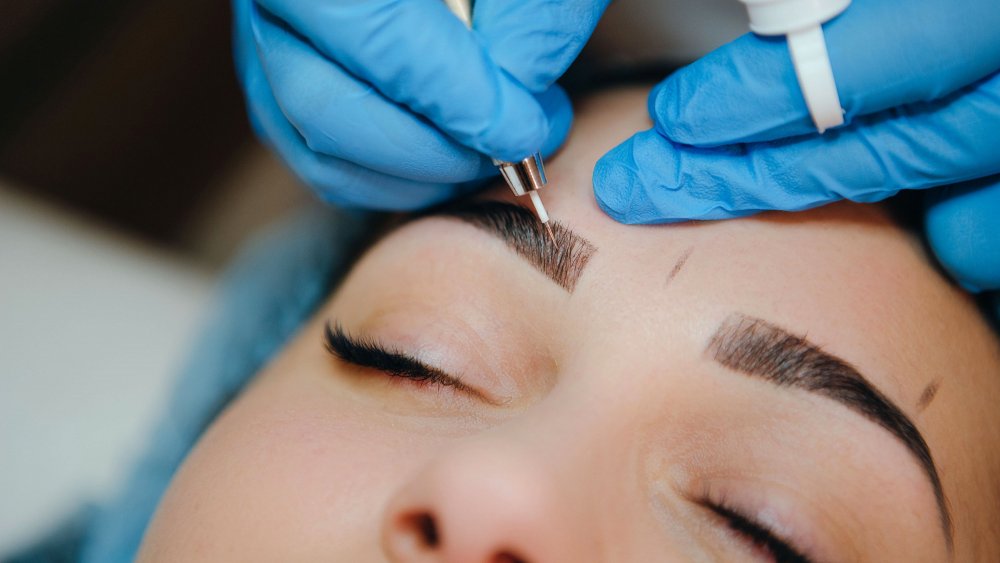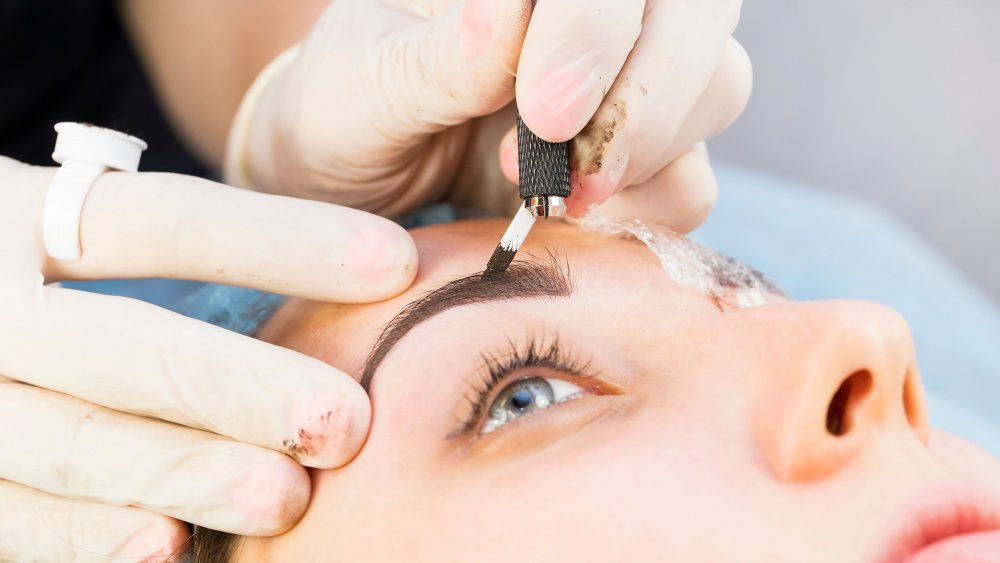The Difference Between Eyebrow Tinting And Microblading
If you're a fan of the bold brow look, you're likely to have heard of eyebrow tinting and microblading. However, you may not be aware of the differences between the two. Both increasingly popular in recent years, they are the go-to brow treatment for many of the beauty-obsessed and often have the ability to completely transform your face.
"Tinting is one of the quickest ways to achieve a thicker, natural-looking long-lasting looking brow," Jaimineey Patel, Head of Training at Blink Brow Bar in London, told ELLE. It's a 5-minute treatment that dyes the brow hairs just as you would the hair on your head and usually lasts anywhere between two and three weeks, naturally fading in line with your natural hair growth cycle. It's suitable for every hair type and color, and as Patel points out, is "a great long-lasting option particularly for those with light or blonde hair as it can add brows that you never thought you had."
Microblading is a semi-permanent tattoo treatment
Microblading, on the other hand, is a semi-permanent tattoo treatment, which is conducted using microneedles. "Microneedles are so tiny that they can't be seen in detail by the naked eye," Renee Lee, CEO and master artist and trainer at Le Kitsuné, a brow studio in New York City, explained to Prevention. Basically, a pen-like tool made up of microneedles injects ink into the top layer of skin, delivering hair-like strokes that mimic the appearance of brow hair to achieve fuller-looking brows. Unlike eyebrow tinting, the treatment requires healing time and aftercare, however, it can last up to two years.
While eyebrow tinting is relatively safe, microblading does come with some risks. "Since the procedure requires traumatizing the skin, if the skin is unhealthy, the outcome will be unpredictable and most likely not ideal," Lee told Prevention. As Joshua Zeichner, MD, director of cosmetic and clinical research in dermatology at Mount Sinai Hospital in New York City, said, "In the event that the technician deposits the pigment too deep in the skin or if you develop an infection, there may be permanent damage to the hair follicles. It also is possible that the blade cuts some of your natural hair is in the process of depositing the pigment into the skin."

